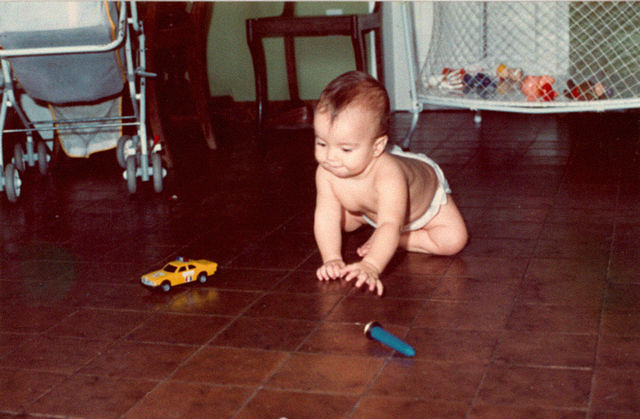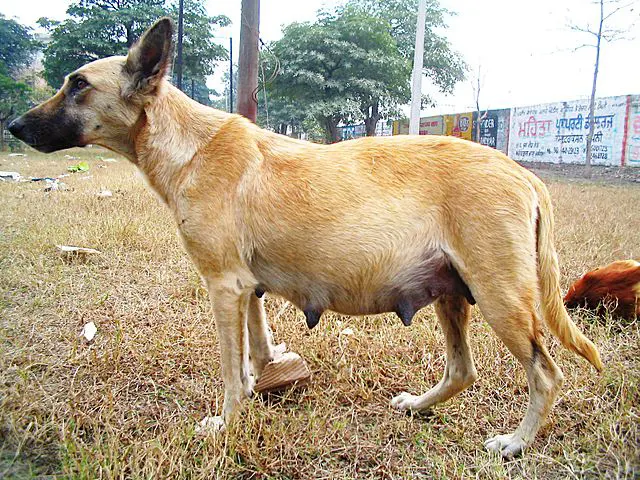According to studies, 50% of infants start to crawl by 8 months. However, some infants may begin to crawl before 6 months, and others may not begin until at least 11 months old.
Does the absence of crawling in your child indicate a problem? No. It’s perfectly normal for infants to completely forego crawling.
Crawling is not “programmed” into the development of infants. Instead, babies are inspired to try out various forms of movement before settling on the one that feels the most rewarding.
A baby may decide to crawl in one of the following ways:
- belly crawling
- crawling on hands and knees, or
- A baby may prefer to move by hands-and-feet crawling, or one of the following alternative techniques:
- scooting, also known as bottom-shuffle
- step-scooting, a tripod-like shuffle
- either cruising (walking while grabbing handholds),
- a rolling
Additionally, it’s common for infants to mash up various techniques or improvise their own, peculiar means of propulsion. Why so much variety? You might imagine that infants would all agree on the most effective way to move from one location to another. But that’s the crux of it: Babies might not always agree on what is best. Some infants, for instance, might find crawling uncomfortable or prefer a form of locomotion that allows them to maintain an upright posture. It is also obvious that the environment has an impact. We’ll see that babies who have had lots of opportunities to move around while lying on their stomachs are more likely to learn to crawl. So let’s examine the progression of infant locomotion, including crawling, in more detail. What can you anticipate during your baby’s first year, when do babies crawl, and why is there such a wide range? Here is a guide that is supported by research and includes crawling-related FAQs.
How do infants begin their crawling journey?
The first step is “tummy time,” those times when your baby lies awake on his or her stomach under supervision.
Babies strengthen their neck and shoulder muscles while lying on their stomachs. They learn to support themselves with their elbows while holding up their heads and shoulders.
Although this muscle control and strength are necessary for crawling, babies don’t stop there. Infants may try some of these manoeuvres as they grow stronger:
- doing the “plank” (standing or squatting while balancing on your arms and feet)
- circular motion (pivoting)
- Kneeling on the floor and swaying back and forth
- advancing one step (either on your belly or your hands and knees)
- alternating between a prone position and a sitting position
- attempting to advance but pushing backwards instead
Does a baby have to be proficient in all of these abilities before they start to crawl? No. However, it’s likely that your child will practise at least one before jumping in (Adolf et al 1998).
Must infants sit up before they can crawl?
Again, the response is no. Before they reach this developmental stage, babies can start belly-crawling. Can you help your baby get started in any way? Yes! Get down on the floor with your baby, and make eye contact. Talk to your infant and smile at him or her to encourage head-up holding. Encourage your baby to approach you as they gain strength. And if your baby is having trouble learning how to move forward by pushing backwards instead of forward, try offering some resistance. Put your hands behind the feet of your infant so that they can push up against them. What comes next? For many babies, it’s belly-crawling. Some infants move right on to hands-and-knee crawling.
Crawling techniques
The commando crawl and the inchworm crawl are two types of belly-crawling
Babies crawling on hands and knees with their tummies held high above the ground is a common image that comes to mind when we think of crawling. However, some infants are taught to crawl on their bellies.
How common is belly crawling? It is absolutely normal, yes. In fact, belly-crawling was the starting point for about half of the babies when Karen Adolf and her colleagues studied the development of crawling in 28 American infants. Now, when do infants roll over onto their bellies? From baby to baby, it differs. Most belly-crawlers started between the ages of 5 and 8.5 months in the study conducted by Adolf’s team. How does belly-crawling appear? When belly-crawling, there are two main patterns or variations: The army crawl, also known as the “commando crawl.” This is clearly shown in the photo here and is simple to identify. A baby who is prone (lying on his stomach) pulls himself forward while swivelling to the left and right.
The legs assist somewhat, fishtailing from side to side, but the upper body generates the majority of the propulsion. On the other hand, the infant is mainly dragging himself along the floor with his arms and shoulders. The baby doesn’t have to be concerned about losing his balance at any time while performing an army crawl. He carries his weight on his thighs and belly. Variant #2: The “inchworm crawl.” In this variation of the belly crawl, the infant simultaneously pulls herself forward with both arms, rises a little bit, and then lands with a belly flop.






